1. Life and Background
Frédéric Bazille's personal history and early experiences profoundly shaped his artistic journey.
1.1. Birth and Family
Frédéric Bazille was born on December 6, 1841, in Montpellier, Hérault, Languedoc-Roussillon, France. He came from a wealthy Protestant family of wine merchants. Bazille spent his early life growing up at Le Domaine de Méric, a family-owned wine-producing estate located in Castelnau-le-Lez, near Montpellier. This environment provided him with financial stability that would later benefit his artistic pursuits and support his fellow artists.
1.2. Early Artistic Interest and Medical Studies
Bazille developed an early interest in painting after being exposed to works by Eugène Delacroix, such as his famous Women of Algiers and Daniel in the Lions' Den. At the age of 18, his family agreed to allow him to pursue painting, but only on the condition that he concurrently studied medicine. He began his medical studies in 1859. He found medicine increasingly distasteful, writing in a letter to his parents that he would soon have to return to Paris to devote himself to "the abominable medicine" which he disliked more and more. After failing his medical exam in 1864, he finally received his parents' permission to dedicate himself entirely to painting.
2. Artistic Career
Bazille's artistic career was marked by significant training, close collaborations with leading Impressionists, and a persistent drive to challenge the traditional art establishment.
2.1. Parisian Studies and Gleyre's Studio
In 1862, Bazille moved to Paris to continue his medical studies, but soon enrolled in the studio of Charles Gleyre. Here, encouraged by a fellow student from Montpellier named Castelnau, he met and befriended future Impressionist luminaries, including Pierre-Auguste Renoir, Claude Monet, and Alfred Sisley. Bazille quickly became drawn to their innovative approaches to painting.
During the Easter period of 1863, Bazille and Monet embarked on a painting trip to Chailly-en-Bière, near the Fontainebleau Forest, where they engaged in en plein air sketching. Bazille referred to Monet as his "best friend among the budding painters," noting Monet's useful advice on landscape painting. He wrote to his parents that he had spent a week in Chailly with Monet, who was "from Le Havre and very good at landscape painting." They also spent time at the Louvre Museum, where Bazille copied works by Peter Paul Rubens and Tintoretto, studying the Old Masters. After spending the summer of 1863 in Montpellier, Bazille returned to Paris to find Gleyre's studio was being considered for closure due to his illness, a prospect which deeply saddened the students.
It was around this time that Bazille met Paul Cézanne among the artists who gathered at his cousin Lejeune's home. Through Cézanne, he also met Camille Pissarro and Armand Guillaumin, who were studying at the Académie Suisse. Bazille introduced Cézanne to Renoir, playing a role in connecting members of Gleyre's studio with those from the Académie Suisse.
In 1864, Bazille and Monet further explored the Norman coast, staying in Rouen, Honfleur, and Sainte-Adresse. In Honfleur, Bazille met older landscape painters highly admired by Monet, Eugène Boudin and Johan Barthold Jongkind. Although Bazille returned to Paris earlier, Monet, who remained in Honfleur, conveyed his joy of creating in the area to Bazille in a letter.
2.2. Fellowship with Impressionists
Bazille fostered deep friendships and artistic collaborations with many of his contemporaries, playing a pivotal role in the early development of Impressionism.
In late 1864, Bazille invited Monet to share his studio on Rue de Furstemberg. This shared space fostered their collaborative spirit. That winter, Monet and Bazille frequently visited the home of Bazille's relatives, the Lejeunes. There, they met Henri Fantin-Latour, Charles Baudelaire, Jules Barbey d'Aurevilly, Nadar, Gambetta, Victor Massé, and Edmond Maître, who became a close friend of Bazille's. Bazille's admiration for Richard Wagner further strengthened his bond with Maître.
In the spring of 1865, Monet, who had begun his ambitious painting Luncheon on the Grass in Chailly, invited Bazille to model for the figures. When Bazille finally arrived in Chailly that summer, he found Monet injured and confined to bed. Using his medical knowledge, Bazille helped alleviate Monet's pain, a scene he captured in his painting Monet in his Bed. Monet ultimately used Bazille as a model to complete Luncheon on the Grass.
Bazille was known for his generosity, often using his family's wealth to support his less fortunate artist friends. He frequently purchased their paintings and provided them with space in his studios and painting materials. For example, in January 1868, Bazille bought Monet's painting Women in the Garden for 2.50 K FRF, payable in monthly installments of 50 FRF, providing much-needed financial relief to Monet, who often faced severe economic hardship. Bazille's father frequently urged him to be more frugal due to these expenses. Monet, upon the birth of his first son, repeatedly wrote to Bazille about his financial struggles. Bazille also became the godfather to Monet's eldest son, Jean, further cementing their bond. His close friends also included Édouard Manet, Émile Zola, Gustave Courbet, Zacharie Astruc, and Edmond Maître.
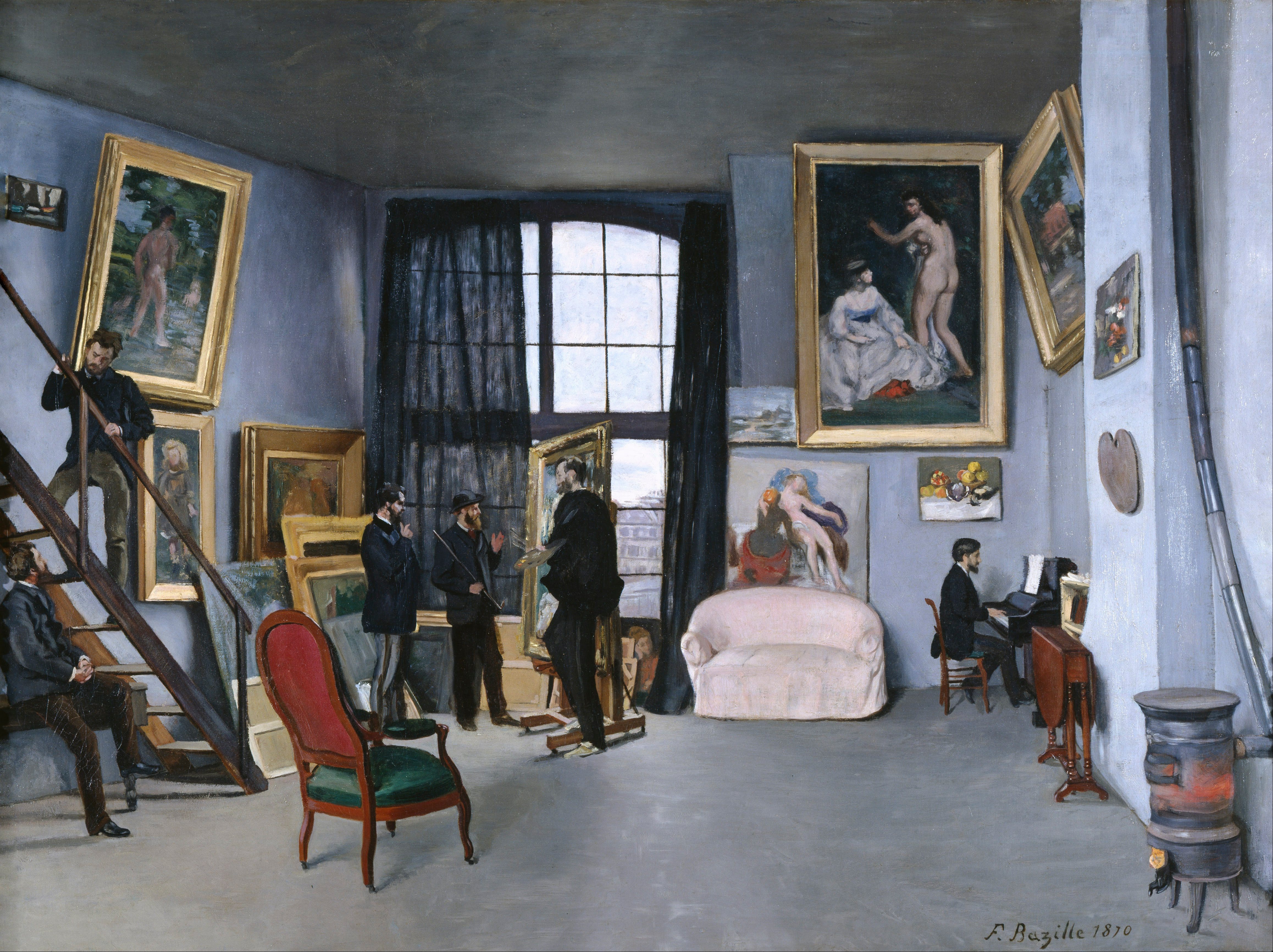
2.3. Artistic Influences and Techniques
Bazille's artistic style was shaped by both traditional influences and the burgeoning techniques of Impressionism. His early fascination with Eugène Delacroix's vibrant works hinted at his later interest in color and light. He also studied the Old Masters, notably Rubens and Tintoretto, through copying their works at the Louvre.
Many of Bazille's major works demonstrate his unique approach to figure painting, where he positioned the subject figure within a landscape painted en plein air (outdoors). This technique, shared by many Impressionists, allowed him to capture the natural light and atmosphere. His painting The Pink Dress (1864), depicting his cousin from behind gazing at a sunlit landscape, exemplifies this. His acclaimed Family Reunion (1867-1868) further showcases his ability to compose groups of figures under strong Southern French light, using powerful contrasts. While somewhat stiff in its figures, critics recognized its superior composition and sensitivity to light as a precursor to the Impressionist movement.
Around 1867, Bazille's work saw a shift, with fewer landscapes of the Île-de-France region and an increase in genre paintings featuring friends and family. While he still painted landscapes of Provence, he increasingly finished them in his studio, indicating a partial return to a more academic style, similar to Renoir's work at the time. Bazille also explored modern male nudes, as seen in Fisherman with a Net (1868) and Summer Scene (1869), attempting to integrate traditional academic subjects into contemporary genre scenes. Critics praised Summer Scene for its "sun-drenched canvas." His later friendship with Henri Fantin-Latour also influenced his work, leading him to incorporate elements of Japanese art, such as the Japanese robe in La Toilette (1870) and Laurent Bouvier's Japanese-influenced vases in Black Woman with Peonies (1870), painted just before his departure for military service.
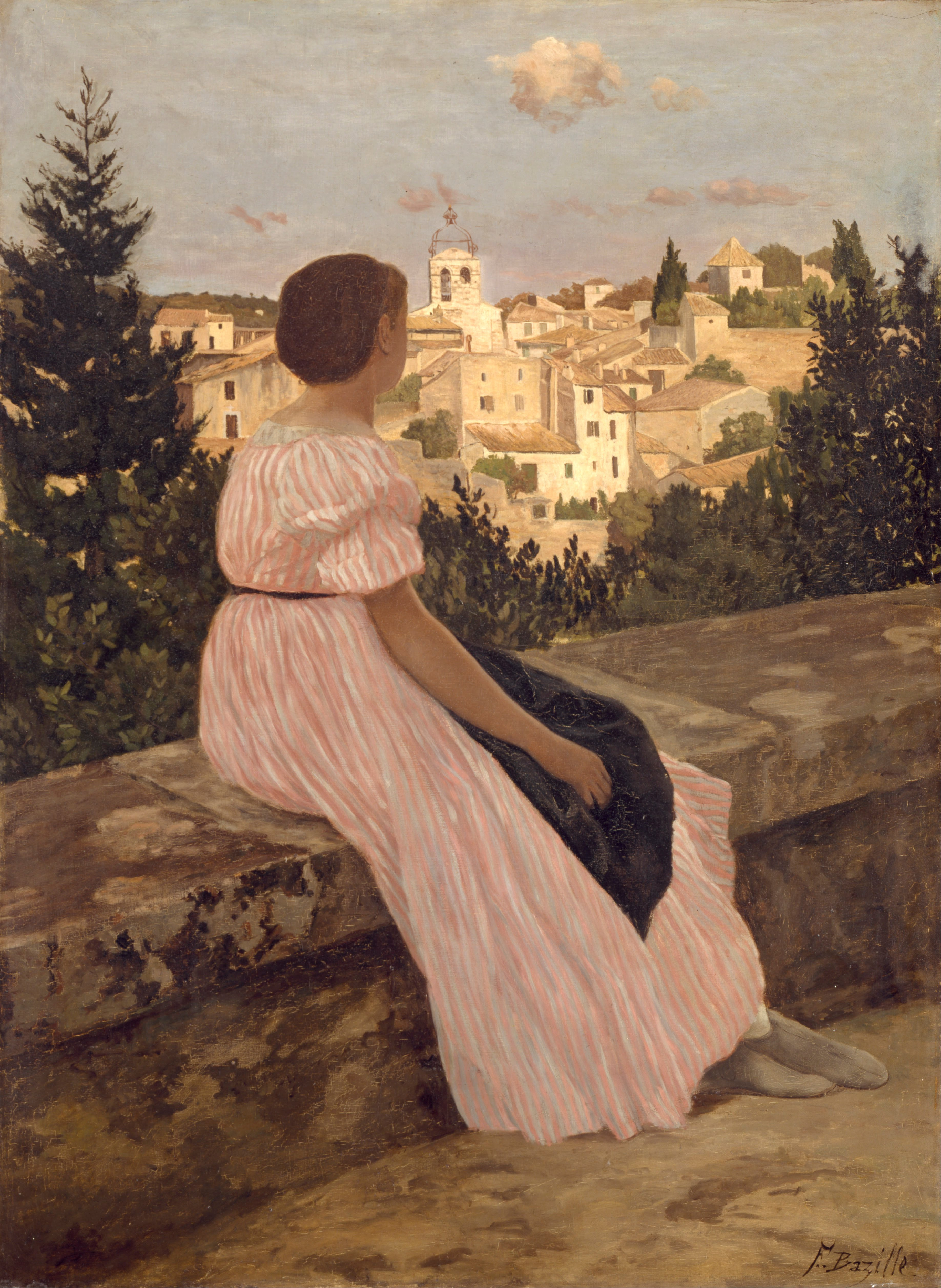
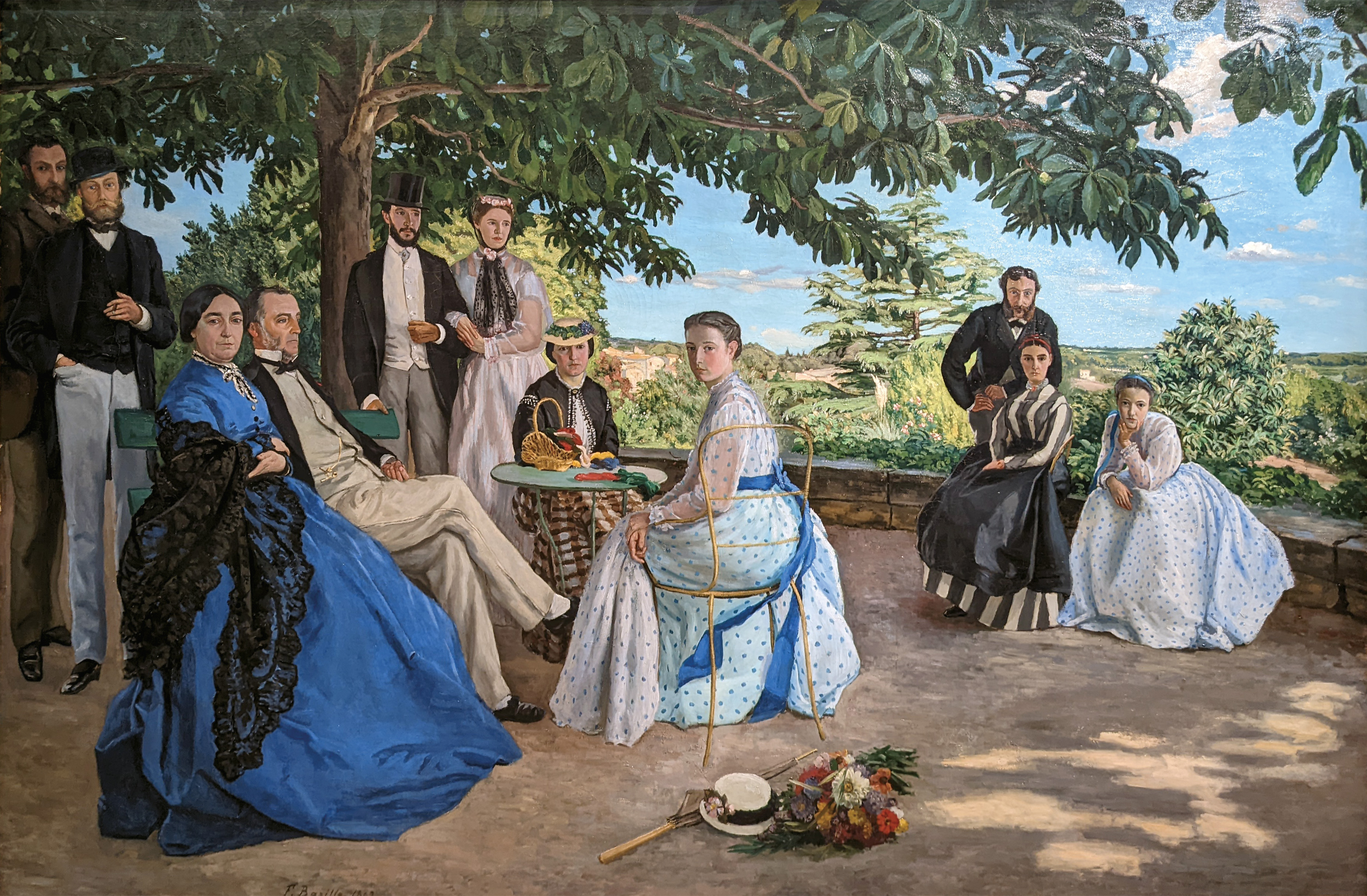
2.4. Studio Life and Artistic Circles
Bazille maintained several studios in Paris, which became vital gathering points for the avant-garde artists and intellectuals of his time.
In July 1866, Bazille moved to a larger studio on Rue Visconti, which he shared with Renoir. Sisley and Monet also frequently visited this location. It was here, in 1867, that Bazille and Sisley worked on the same still life of a heron from different angles, and Renoir painted his famous portrait of Bazille at work. Bazille, in turn, also painted a portrait of Renoir.
In January 1868, Bazille and Renoir relocated to a new, more spacious studio on Rue de la Paix (later renamed Rue La Condamine in December 1869) in the Batignolles district. This studio was conveniently located near the Café Guerbois, a favorite haunt of Édouard Manet and the meeting place for the group of artists known as the "Batignolles Group." The Rue de La Condamine studio attracted a wider circle of artists and writers, including Monet, Renoir, Manet, Émile Zola, Pissarro, Cézanne, and Gustave Courbet. In 1870, Bazille depicted this studio in his painting Studio in Rue de La Condamine. The work features Bazille himself, palette in hand, with Manet, Edmond Maître at the piano, and possibly Monet, Renoir, and Zacharie Astruc. The painting also subtly critiques the academic establishment by showing works rejected by the Salon. In April 1870, Bazille moved his studio again, this time to Rue des Beaux-Arts, where Fantin-Latour also had a studio, further reinforcing their friendship and shared artistic interests. Bazille's final painting before his military service, Black Woman with Peonies, was painted in Paris.
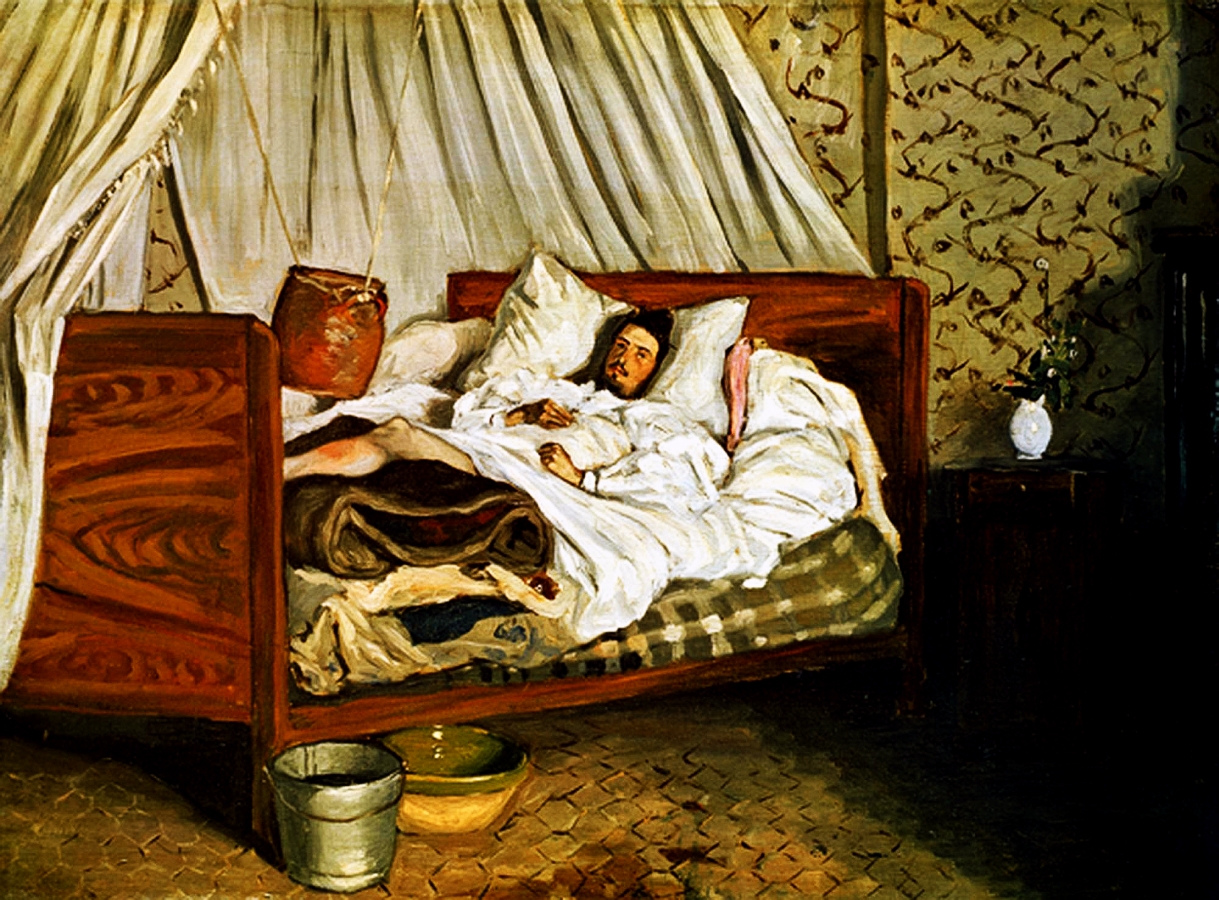
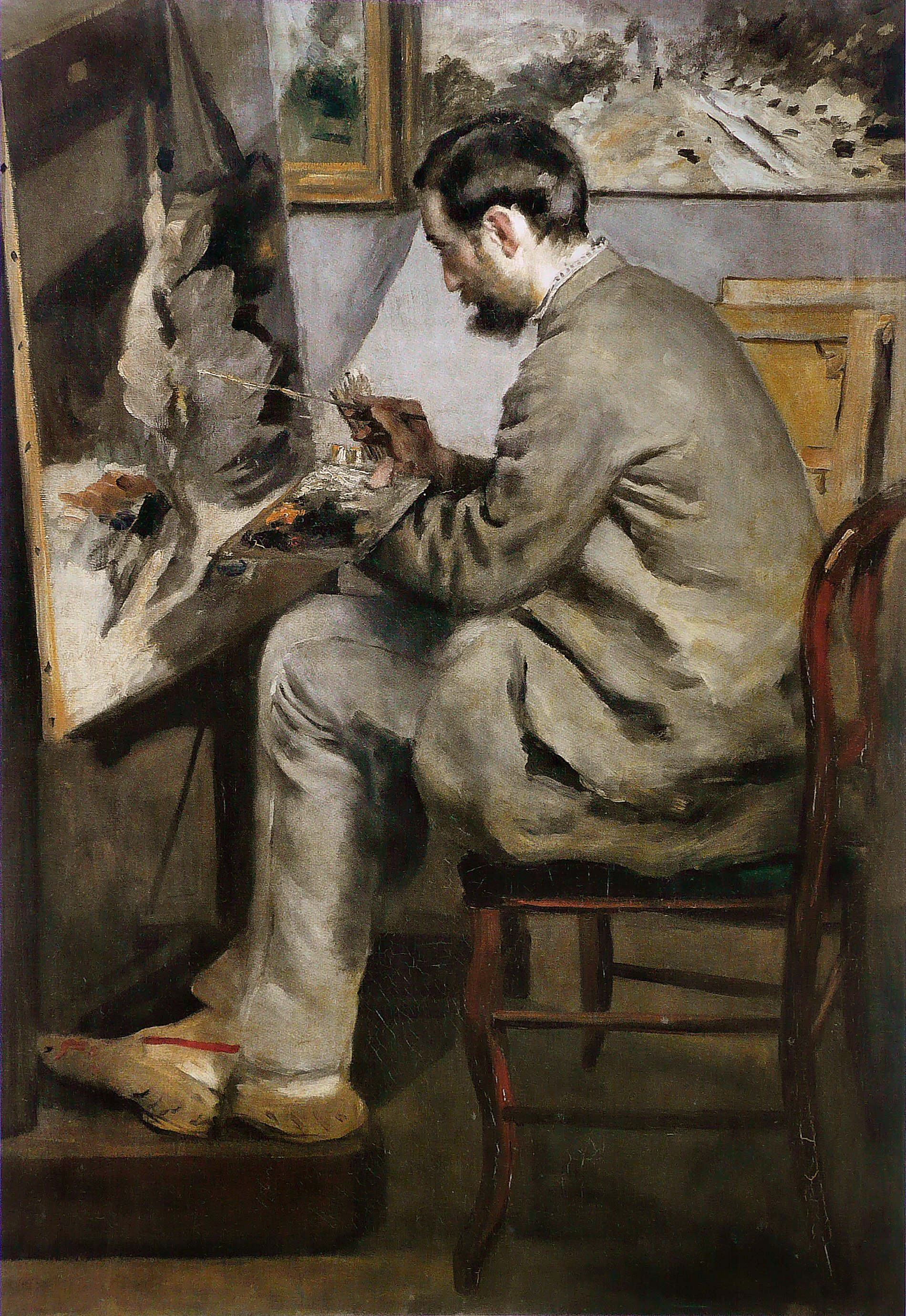
2.5. Salon Participation and Exhibition Ideas
Bazille regularly submitted his works to the official Salon de Paris, experiencing both successes and rejections, which fueled his desire for independent exhibitions.
For the 1866 Salon, Bazille submitted two paintings: A Girl at the Piano and Still Life with Fish. He wrote to his parents that he had "chosen the modern period because it is the one I understand best and which feels most alive to the people of today, but perhaps it will lead to rejection." Although Still Life with Fish was accepted (a work he personally disliked), A Girl at the Piano was rejected. He expressed his anxiety, stating, "Considering the number of applicants, I greatly fear that I will be rejected. This will be decided tomorrow. If I am rejected, I will sign with both hands the petition for a Salon des Refusés." This year saw many of his friends accepted due to a more lenient jury that included Jean-Baptiste Camille Corot and Charles-François Daubigny.
The 1867 Salon became much stricter, leading to rejections for many of Bazille and his friends' works. In a letter to his parents around May 1867, Bazille noted the mediocrity of the Salon that year and expressed his excitement about upcoming solo exhibitions by Courbet and Manet during the Paris Exposition of 1867. He also revealed an early plan among young artists to organize their own exhibition, having collectively raised about 2.50 K FRF, though it proved insufficient for their desired venture, forcing them to abandon the plan for that year. This early initiative is notable as a precursor to the later Impressionist group exhibitions.
For the 1868 Salon, Bazille successfully had Family Reunion and Vase of Flowers accepted.
In 1869, Bazille's View of the Village was accepted, but his Fisherman with a Net was rejected. He wrote to his parents about the "bad news" of the rejection, but also with renewed determination, stating, "We have decided to rent a studio every year where we will exhibit as many works as we wish... Our friends will initiate this next year. As for me, I look forward to it." This shows his continued commitment to independent exhibitions outside the Salon. Although View of the Village was accepted, it faced strong opposition from figures like Jean-Léon Gérôme, but was defended by Alexandre Cabanel, a professor at the official art school and also from Montpellier, much to Bazille's surprise.
For the 1870 Salon, Bazille submitted Summer Scene and La Toilette. While Summer Scene was accepted and praised by critic Zacharie Astruc for its "sun-drenched canvas," La Toilette was rejected, even after Bazille hastily added a third female figure to it just before the submission deadline. Despite the rejections, Bazille was satisfied with the reception of his accepted work, writing to his parents, "I am very happy with the exhibition of my work. My painting is hung in a very good spot. Everyone looks at my work and talks about it... At least, I am not behind the times, and whatever works I exhibit in the future will attract attention."
3. Major Works
Frédéric Bazille's relatively small oeuvre of approximately 70 oil paintings includes several significant works that highlight his unique contributions to early Impressionism.
- La robe rose (1864) - 147 x 110 cm, Musée d'Orsay, Paris. Depicts his cousin Thérèse des Hours from behind, set in a sunlit landscape.
- Studio on Rue Furstenberg (1865) - 80 x 65 cm, Musée Fabre, Montpellier. Shows his studio where he worked with Monet.
- Aigues-Mortes (1867) - 46 x 55 cm, Musée Fabre, Montpellier. A landscape painting.
- Self-portrait (1865-1866) - 109 x 72 cm, Art Institute of Chicago.
- Family Reunion (1867-1868) - 152 x 230 cm, Musée d'Orsay, Paris. His most famous work, depicting family members on a terrace under strong Southern light.
- Fisherman with a Net (1868) - 134 x 83 cm, Fondation Rau pour le tiers-monde, Zürich. An attempt at modern male nude figures.
- View of the Village (1868) - 130 x 89 cm, Musée Fabre, Montpellier.
- Summer Scene (1869) - 158 x 158 cm, Fogg Art Museum, Harvard University, Cambridge, Massachusetts. Another work exploring modern male nudes in a genre scene.
- La Toilette (1870) - 132 x 127 cm, Musée Fabre, Montpellier. Depicts women bathing, later altered to include a third figure.
- L'Atelier de la rue Condamine (1870) - 98 x 128.5 cm, Musée d'Orsay, Paris. A self-portrait within his studio, surrounded by friends and their rejected works, symbolizing a critique of the Academy.
- Paysage au bord du Lez (1870) - 137.8 x 202.5 cm, Minneapolis Institute of Arts, Minneapolis.
4. Franco-Prussian War and Death
Frédéric Bazille's life and promising artistic career were tragically cut short by the Franco-Prussian War.
In May 1870, Bazille returned to Montpellier for his nephew's birthday celebration and worked at his family's estate in Méric. When the Franco-Prussian War broke out on July 19, 1870, Bazille volunteered for military service, joining a Zouave regiment on August 10, 1870.
On November 28, 1870, just before his 29th birthday, Bazille was with his unit at the Battle of Beaune-la-Rolande in Loiret, near Orléans. When his commanding officer was wounded, Bazille took command and led an assault on the German position. He was struck by two bullets during this failed attack and died on the battlefield at the age of twenty-eight. His father traveled to the battlefield within days to retrieve his son's body, which was then brought back to Montpellier for burial in the Protestant cemetery over a week later.
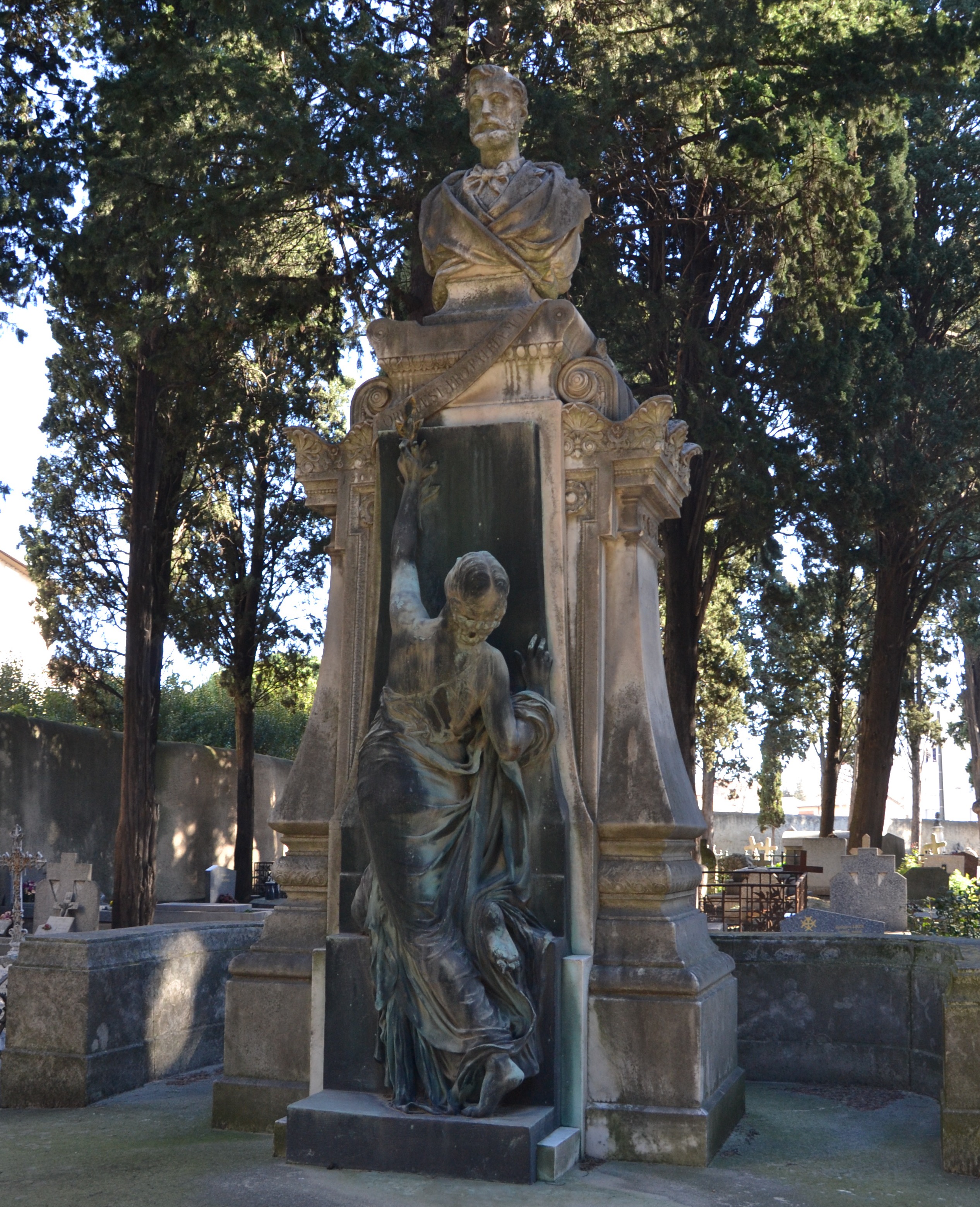
5. Posthumous Legacy and Recognition
Bazille's untimely death profoundly impacted his contribution to art history, yet his vision and works eventually received significant posthumous recognition, cementing his place in the history of Impressionism.
5.1. Posthumous Exhibitions and Recognition
The concept of independent group exhibitions, which Bazille had tirelessly advocated for and planned with his friends, materialized after the Franco-Prussian War. The first Impressionist exhibition, though Bazille did not live to see it, took place in 1874, featuring works by Monet, Renoir, Pissarro, Degas, and other members of the Batignolles Group.
Bazille's artistic achievements began to be formally acknowledged through these exhibitions. In 1876, at the second Impressionist exhibition, Renoir loaned his portrait of Bazille, which Édouard Manet had acquired, as a testament to their friendship. Bazille's father attended this exhibition and was deeply moved upon seeing his son's portrait. Edmond Maître, a close friend of Bazille, facilitated an exchange, allowing Bazille's father to acquire the portrait in exchange for Monet's Women in the Garden, which Bazille had purchased and owned. Two of Bazille's own posthumous works were also exhibited at this second Impressionist show, ensuring that his contributions were not forgotten and began to receive the recognition they deserved. His paintings remain valuable historical records of the Impressionist movement's nascent stages.